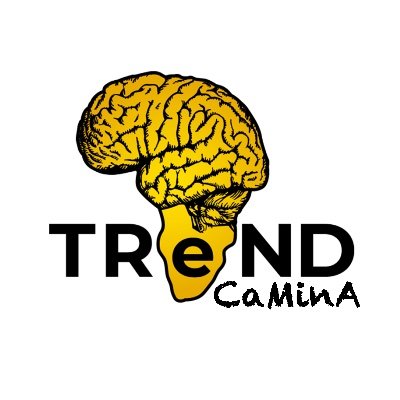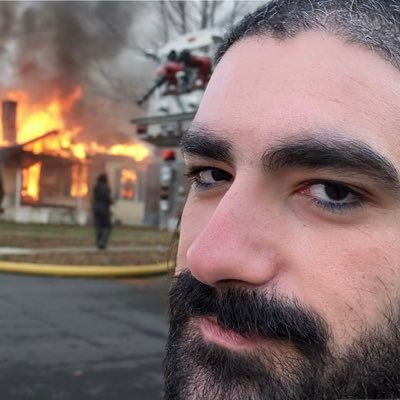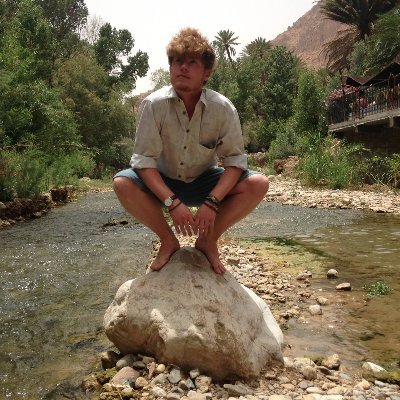
Marcus Ghosh
@MarcusGhosh
Followers
883
Following
5K
Media
96
Statuses
362
Postdoctoral Fellow (@ImperialX_AI, @SchmidtFutures). Working on multisensory integration with @neuralreckoning. 🦋 https://t.co/ohinpf7O63
London, England
Joined June 2019
How should animals combine information across their senses? Prior work suggests linear fusion (sight+sound). However, we show that this would be sub-optimal for many multisensory tasks, and instead, propose a nonlinear function f(sight, sound). https://t.co/98uidkutAz
Our paper on nonlinear multimodal processing now out in @PLOSCompBiol (with @MarcusGhosh, @GabrielBna1 and @BormuthVolker). TLDR: adding a simple nonlinearity to the classic model helps a lot, but only on tasks with more realistic temporal structure. https://t.co/FabrSTSE7O
2
6
24
Excited to be teaching with TReND again! Come along 🙂
🌍Exciting news! The 2025 TReND-CaMinA Course will be held in Lusaka, Zambia 🇿🇲 from July 7th–23rd. Dive into computational neuroscience and machine learning with us! 📅 Applications open: December 15th 🔗More info: https://t.co/P49RfKW1dx Stay tuned & spread the word! 🧠✨
1
1
13
Really enjoyed presenting at both @UniKonstanz & @BernsteinNeuro recently. And, talking with some great people inc: @Pipcoen, @SSerenaDing, @zwitscherarmin, @KatrinVogt3 and may more.
0
0
30
I will be at #BernsteinConference (@BernsteinNeuro) next week - with my @neuralreckoning colleagues. Drop me a message if you'd like to meet up. Otherwise, stop by my poster (IV 47) for some new work on multisensory integration
Come and meet the Neural Reckoners at @BernsteinNeuro with posters from: ⭐️@GabrielBna1: specialization/modularity ⭐️@MarcusGhosh @Swathi_Anil_: multisensory processing ⭐️Yang Chu: bootstrapping auditory learning with an innate circuit ⭐️Greta Horvathova: adversarial autoencoders
0
0
12
Otherwise thanks again to @Kaysonfakhar & @CCHilgetag (@ICNS_Hamburg) for hosting me and @DanAkarca.
0
0
4
It features both new and published work - which you can read here: https://t.co/98uidkutAz
1
0
3
I recently gave a talk on: Nonlinearity and network topology in multimodal circuits. Which you can watch here: https://t.co/BpAdDS9tr3
And here's the one from @MarcusGhosh
https://t.co/uT5A6Zr0Ej Some impressive work is being done by a very cool team, join them.
1
5
21
💥I’m hiring! 💥🚀 Funded by @ARIA_research, we’re massively ramping our work on spatially-embedded efficient computation in neural networks. 18m first instance, great London location, competitive postdoc salary. Any Qs, my DMs are open! (please RT). https://t.co/WYdZmJ6VLL
3
36
70
How should we support research software engineers? One idea from @ryrobyrne!
I think RSE teams is a good step, but not the right one in the long term. Instead tool-makers should run autonomous "studios", analogous to "labs". This will be cheaper, more innovative, and more attractive for talented engineers. How might this work? A dialogue 🧵
1
0
5
Working together like this (across labs, disciplines and countries) feels like the future. Congratulations to everyone involved: @TomasFiers, @dilay_ercelik, @Z_Friedenberger, @GabrielBna1, @ryrobyrne, @IdoAizenbud, @BormuthVolker, @_AAlpha, @neuralreckoning + many more!
1
0
8
How should we structure large-scale scientific projects? Massive, open source collaborations (which anyone, anywhere can join) are one option! We ran a project like this for 2 years. Read about our experiences and findings here: https://t.co/eBcyiQ3AeD
New preprint on our "collaborative modelling of the brain" (COMOB) project. Over the last two years, a group of us (led by @MarcusGhosh) have been working together, openly, online, with anyone free to join, on a computational neuroscience research project https://t.co/tzvWGWq4g1
2
6
24
I hadn’t really thought about the variety of algorithms that *could* optimally underpin multi-modal processing/integration, until this awesome work by @MarcusGhosh & team. Clear findings w/ experimentally testable predictions on nonlinear fusion in agents & organisms! 👌
Our paper on nonlinear multimodal processing now out in @PLOSCompBiol (with @MarcusGhosh, @GabrielBna1 and @BormuthVolker). TLDR: adding a simple nonlinearity to the classic model helps a lot, but only on tasks with more realistic temporal structure. https://t.co/FabrSTSE7O
0
3
10
Teaching on the @trend_camina (@TReNDinAfrica) summer school (Rwanda) was an incredible experience. Both the students and staff (below) were super inspiring! @saraysoldado, @jsoldadomagrane, @TomNotGeorge, @artemiskoum, @burakgur_, @tmchartrand, @fredpckuo, @devonjarvi5 etc
1
7
39
2 years into making, the last chapter of my PhD thesis, and a set of wonderful collaborators: @m00rcheh, @ShreyDixitAI, @misicbata, @caioseguin, @GZamora_Lopez, @CCHilgetag. 🧵 What can we learn about communication in brain networks from 7000 million virtual lesions:
A General Framework for Characterizing Optimal Communication in Brain Networks https://t.co/ycXWplt3qf
#biorxiv_neursci
4
50
171
Really enjoyed this thoughtful pair of articles, from @lengyel_m & @jpillowtime, on the usefulness of Marr's three levels in #neuroscience: ❤️ https://t.co/Xpd1VlhffK ❤️🩹 https://t.co/sMcTLnpAeo
0
2
16
Awesome to see two @ZebrafishRock papers out from my old colleagues @uclcdb this week (@SuppAnya, @realRihellab, @stevewilsonfish etc): ⚪️ Sleep pressure and synapses ( https://t.co/F5brf8doCU) ⚪️ Neuronal asymmetry ( https://t.co/ZbWMCiGHun)
0
3
14
For all COMOB contributors! Make sure you follow the instructions below to get your contribution recognized🙂
Two years ago we started an open, collaborative computational neuroscience modelling project called COMOB. We're now writing up the paper. If you are one of the contributors, please check out the page below for instructions on getting recognised asap. https://t.co/3xv8pEhUyL
0
0
6
1/6 Surrogate gradients (SGs) are empirically successful at training spiking neural networks (SNNs). But why do they work so well, and what is their theoretical basis? In our new preprint led by @JuliaGygax4, we provide the answers: https://t.co/QkQ4MniGIG
3
36
129







